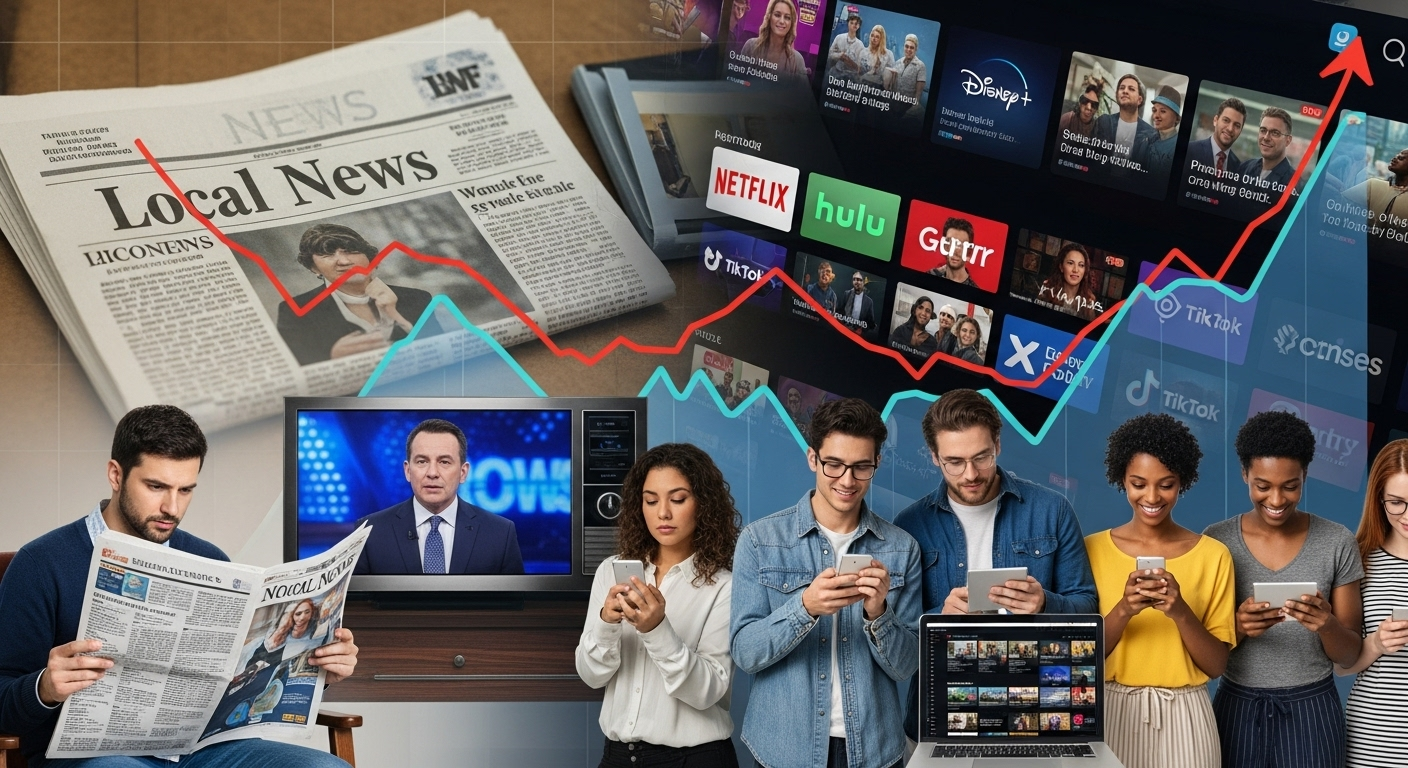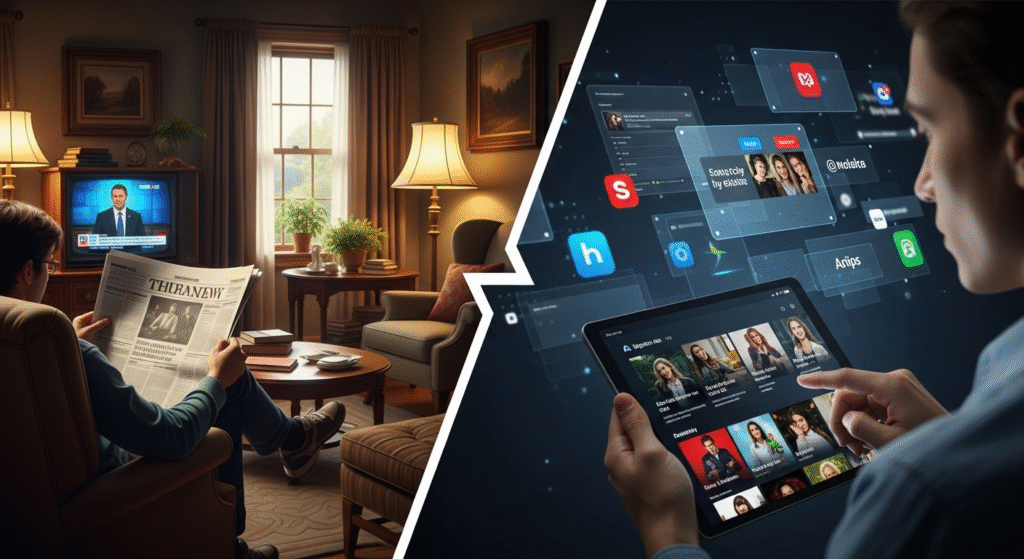Okay, let’s be real. Remember a time when the evening news was, well, the evening news? Walter Cronkite types, serious faces, delivering the day’s events with gravitas? Me too. Seems like a lifetime ago, doesn’t it? Now, it’s all about scrolling through TikTok between bites of dinner or catching up on YouTube while waiting for the microwave to beep. The landscape has completely shifted, and streaming services are a huge part of that shift.
But are we actually informed? Or are we just… entertained? That’s the question that keeps buzzing around in my head like a particularly persistent mosquito. I initially thought it was all doom and gloom for traditional news, but, wait for it, there’s actually more to the story than meets the eye. And honestly? I’m finding the nuances fascinating.
The Rise of the Algorithm: News Tailored (Too Much?) To You

Here’s the thing: streaming services and social media platforms thrive on algorithms. These algorithms learn what you like, what you click on, what makes you… well, stay glued to that screen. Great for cat videos. But for news? Potentially a problem. We risk getting stuck in echo chambers, where we only see opinions and stories that reinforce our existing beliefs. Navigating the AI Revolution: Staying Informed in a World of Algorithms can give more insights here. Scary thought, right?
Think about it this way: You love hiking. So, you see endless posts about amazing trails. Fantastic! But what about the proposed logging development threatening those trails? If you’re not actively seeking out diverse information sources, you might completely miss it. That’s the algorithm at play. It’s not necessarily malicious, but it can be limiting. I mean, I love seeing hiking content, but I want to stay informed about the logging too. Which brings me to…
From Headline to Hype: The Quest for Clicks
News outlets are businesses, bottom line. And in the age of streaming and social media, that means they’re competing for eyeballs. The more clicks, the more ad revenue. This leads to some, shall we say, creative headline writing. Clickbait, anyone? Sensationalism? It’s everywhere. It can be hard to tell what’s actually important from what’s just designed to grab your attention (and make you watch a 30-second ad). I’ve got to admit, this part frustrates me.
And the speed! Information is disseminated so rapidly now. It’s like trying to drink from a firehose. Accuracy can sometimes take a backseat to being first to break the story. Which is… not ideal. But that’s the nature of the beast these days. The speed of streaming demands content that’s fast, furious, and, sometimes, not entirely accurate.
But here’s where I need to pause for a moment because I am starting to sound a little pessimistic. So let’s address the good aspects of streaming news consumption…
Accessibility and Democratization: A Silver Lining?
Here’s the thing: streaming services have made news more accessible than ever before. Anyone with a smartphone and an internet connection can access a wealth of information. That’s a huge win for democracy, right? Think about it: previously marginalized voices now have platforms to share their perspectives. Independent journalists can bypass traditional gatekeepers. That’s pretty powerful stuff.
And there are some genuinely great news organizations using streaming platforms to their advantage. They’re producing high-quality, in-depth reporting that’s reaching new audiences. It’s not all doom and gloom. It’s just… different. It needs a more critical eye. Maybe we need a new way of understanding the news itself.
And with access to news comes the good, the bad, and the fake. One tool to ensure you get the right news is How Does The Search Console Reveal AI Overviews?
The Future of News: A Hybrid Approach?
So, where does this leave us? Are traditional news outlets doomed? I don’t think so. They still have a crucial role to play in providing in-depth reporting and holding power accountable. But they need to adapt. They need to find ways to engage with audiences on streaming platforms without sacrificing journalistic integrity.
Maybe the future is a hybrid approach: Traditional news organizations partnering with streaming services to deliver content in new and engaging ways. Think documentaries, short-form videos, interactive news experiences. Who knows? The possibilities are endless. The New York Times, for example, has been doing some interesting work with its video series, “The Weekly.” It’s a great example of how traditional news can adapt to a streaming world.
Ultimately, it’s up to us, the consumers, to be discerning. To seek out diverse sources of information. To question what we see and hear. To be active participants in the news ecosystem, not just passive viewers. It’s up to us to be smart consumers.
And speaking of being smart consumers…
FAQ: Streaming News in the Modern World
How can I tell if a news source on a streaming platform is reliable?
Good question! It’s tough out there. Look for established news organizations with a track record of accurate reporting. Check their sources. See if they have a clear editorial policy. And be wary of sensational headlines or stories that seem too good (or too bad) to be true. Cross-reference with other sources. A little healthy skepticism goes a long way.
Why do I only see certain types of news on my streaming services?
Ah, the dreaded algorithm! Streaming services use algorithms to personalize your experience. This means they show you content they think you’ll like, based on your past behavior. To break out of this echo chamber, try actively seeking out diverse news sources and perspectives. Follow news organizations with different viewpoints. Clear your browsing history occasionally. And don’t be afraid to click on articles that challenge your assumptions.
Is the traditional evening news completely dead?
Not quite! While viewership has declined, traditional evening news broadcasts still have a loyal audience. And they continue to play an important role in providing in-depth coverage of major events. Think of it as a different way of consuming news, one that works for a different generation or a different time of day.
What’s the biggest misconception about The Impact of Streaming Services on Traditional News Consumption?
That it’s all bad. Yes, there are challenges. Clickbait, echo chambers, the need for speed over accuracy. But there are also opportunities. Increased accessibility, diverse voices, innovative storytelling formats. The key is to be aware of the pitfalls and embrace the potential.
How can I use streaming services to stay informed without getting overwhelmed?
Set boundaries! Designate specific times for news consumption. Curate your feed by following reputable news sources and unfollowing those that spread misinformation. Use news aggregator apps to get a balanced overview of the day’s events. And don’t be afraid to take breaks from the news altogether. It’s important to stay informed, but it’s also important to protect your mental health.
Remember that little game sites like Crazy Games provide great entertainment and a mental break from the news.



